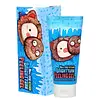What's inside
What's inside
 Key Ingredients
Key Ingredients

 Benefits
Benefits

 Concerns
Concerns

 Ingredients Side-by-side
Ingredients Side-by-side

Water
Skin ConditioningCarbomer
Emulsion StabilisingSteartrimonium Methosulfate
Glycerin
HumectantIsopropyl Alcohol
SolventPhenoxyethanol
PreservativePEG-60 Hydrogenated Castor Oil
EmulsifyingCitrus Limon Fruit Oil
AstringentAllantoin
Skin ConditioningTocopheryl Acetate
AntioxidantTrideceth-10
CleansingCetrimonium Chloride
AntimicrobialButylene Glycol
HumectantPropylene Glycol
HumectantSaussurea Involucrata Extract
HumectantAscophyllum Nodosum Extract
Skin ConditioningChamomilla Recutita Flower Extract
MaskingEthylhexylglycerin
Skin ConditioningPotassium Sorbate
PreservativeCitric Acid
BufferingLilium Candidum Bulb Extract
Skin ConditioningWater, Carbomer, Steartrimonium Methosulfate, Glycerin, Isopropyl Alcohol, Phenoxyethanol, PEG-60 Hydrogenated Castor Oil, Citrus Limon Fruit Oil, Allantoin, Tocopheryl Acetate, Trideceth-10, Cetrimonium Chloride, Butylene Glycol, Propylene Glycol, Saussurea Involucrata Extract, Ascophyllum Nodosum Extract, Chamomilla Recutita Flower Extract, Ethylhexylglycerin, Potassium Sorbate, Citric Acid, Lilium Candidum Bulb Extract
Water
Skin ConditioningGlycerin
HumectantCellulose
AbsorbentButylene Glycol
HumectantDipropylene Glycol
HumectantPentylene Glycol
Skin ConditioningC12-14 Pareth-12
Emulsifying1,2-Hexanediol
Skin ConditioningCarbomer
Emulsion StabilisingTromethamine
BufferingCaprylyl Glycol
EmollientBetaine
HumectantCitrus Aurantium Dulcis Peel Oil
MaskingLavandula Angustifolia Oil
MaskingDisodium EDTA
Glycine Soja Seed Extract
Skin ConditioningDipotassium Glycyrrhizate
HumectantPinus Sylvestris Leaf Oil
MaskingPropanediol
SolventOctanediol
Sodium Hyaluronate
HumectantEthylhexylglycerin
Skin ConditioningBenzyl Glycol
SolventHydrolyzed Glycosaminoglycans
HumectantHydroxypropyltrimonium Hyaluronate
Sodium Hyaluronate Crosspolymer
HumectantCitrus Aurantifolia Fruit Extract
Skin ConditioningCitrus Aurantium Dulcis Fruit Extract
MaskingCitrus Limon Fruit Extract
MaskingPaeonia Suffruticosa Root Extract
Skin ProtectingPyrus Malus Fruit Extract
Skin ConditioningVitis Vinifera Fruit Extract
Skin ConditioningHydrolyzed Hyaluronic Acid
HumectantSodium Acetylated Hyaluronate
HumectantHyaluronic Acid
HumectantHydrolyzed Sodium Hyaluronate
Skin ConditioningPotassium Hyaluronate
Skin ConditioningWater, Glycerin, Cellulose, Butylene Glycol, Dipropylene Glycol, Pentylene Glycol, C12-14 Pareth-12, 1,2-Hexanediol, Carbomer, Tromethamine, Caprylyl Glycol, Betaine, Citrus Aurantium Dulcis Peel Oil, Lavandula Angustifolia Oil, Disodium EDTA, Glycine Soja Seed Extract, Dipotassium Glycyrrhizate, Pinus Sylvestris Leaf Oil, Propanediol, Octanediol, Sodium Hyaluronate, Ethylhexylglycerin, Benzyl Glycol, Hydrolyzed Glycosaminoglycans, Hydroxypropyltrimonium Hyaluronate, Sodium Hyaluronate Crosspolymer, Citrus Aurantifolia Fruit Extract, Citrus Aurantium Dulcis Fruit Extract, Citrus Limon Fruit Extract, Paeonia Suffruticosa Root Extract, Pyrus Malus Fruit Extract, Vitis Vinifera Fruit Extract, Hydrolyzed Hyaluronic Acid, Sodium Acetylated Hyaluronate, Hyaluronic Acid, Hydrolyzed Sodium Hyaluronate, Potassium Hyaluronate
 Reviews
Reviews

Ingredients Explained
These ingredients are found in both products.
Ingredients higher up in an ingredient list are typically present in a larger amount.
Butylene Glycol (or BG) is used within cosmetic products for a few different reasons:
Overall, Butylene Glycol is a safe and well-rounded ingredient that works well with other ingredients.
Though this ingredient works well with most skin types, some people with sensitive skin may experience a reaction such as allergic rashes, closed comedones, or itchiness.
Learn more about Butylene GlycolCarbomer is a polymer of acrylic acid. Its main role is to create a gel consistency.
A high amount of carbomer can cause pilling or balling up of products. Don't worry, most products contain 1% or less of carbomer.
Ethylhexylglycerin (we can't pronounce this either) is commonly used as a preservative and skin softener. It is derived from glyceryl.
You might see Ethylhexylglycerin often paired with other preservatives such as phenoxyethanol. Ethylhexylglycerin has been found to increase the effectiveness of these other preservatives.
Glycerin is already naturally found in your skin. It helps moisturize and protect your skin.
A study from 2016 found glycerin to be more effective as a humectant than AHAs and hyaluronic acid.
As a humectant, it helps the skin stay hydrated by pulling moisture to your skin. The low molecular weight of glycerin allows it to pull moisture into the deeper layers of your skin.
Hydrated skin improves your skin barrier; Your skin barrier helps protect against irritants and bacteria.
Glycerin has also been found to have antimicrobial and antiviral properties. Due to these properties, glycerin is often used in wound and burn treatments.
In cosmetics, glycerin is usually derived from plants such as soybean or palm. However, it can also be sourced from animals, such as tallow or animal fat.
This ingredient is organic, colorless, odorless, and non-toxic.
Glycerin is the name for this ingredient in American English. British English uses Glycerol/Glycerine.
Learn more about GlycerinWater. It's the most common cosmetic ingredient of all. You'll usually see it at the top of ingredient lists, meaning that it makes up the largest part of the product.
So why is it so popular? Water most often acts as a solvent - this means that it helps dissolve other ingredients into the formulation.
You'll also recognize water as that liquid we all need to stay alive. If you see this, drink a glass of water. Stay hydrated!
Learn more about Water